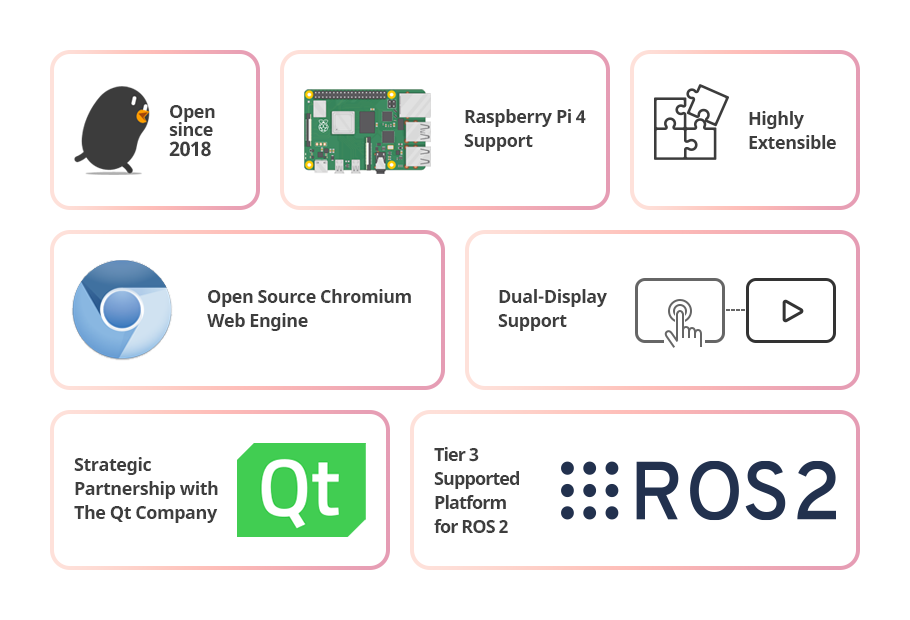Introduction
webOS is a web-centric and usability-focused software platform for smart devices, which has proven its performance and stability in over 70 million LG Smart TVs. Since its adaptation to display products, webOS has come a long way and evolved into a software platform applicable to a broader range of products.
The open source project of webOS, called webOS Open Source Edition (OSE), was announced in March 2018 under the philosophy of open platform, open partnership, and open connectivity. On top of the core architecture of webOS, webOS OSE offers additional features that allow extension to more diverse industry verticals.

We expect webOS OSE will thrive on growing partnerships and contributions to position itself as one of the dominant players among Linux-based platforms. With the participation of partners, developers, and contributors, we will further develop the platform so that it can create a unique business opportunity for you.
Key Features & Benefits
Support for a wide array of development technologies
webOS OSE is based on the standard web technologies that developers are already familiar with — HTML5, CSS3, and JavaScript. For web app development, you can use Enact, a React-based application framework optimized for webOS OSE, as well as other modern web application frameworks.
webOS OSE supports powerful native technologies including Qt, a cross-platform application framework that facilitates developing applications with high performance and intuitive user interfaces. To develop native applications, you can use QML (Qt Modeling Language), C++, or C depending on your requirements.
No matter which technology you prefer, webOS OSE will satisfy your expectation.
Extensible and pluggable architecture
The capabilities of webOS OSE can be extended as required, because its architecture based on Node.js and Luna Bus enables new services to be added with less effort.
webOS OSE uses Yocto Project’s OpenEmbedded build system as a part of its development environment in order to enhance flexibility of code management through customization and layering.
The combination of such highly scalable architecture and flexible development environment makes it more efficient to implement, test, and deploy new features on webOS OSE.
Integration with up-to-date open source technologies
In addition to the openness as an open community to developers, webOS OSE also pursues openness to other technologies, especially open source ones, such as Qt, Chromium, and Yocto, by working in sync with them.
To keep pace with the rapidly changing technology landscape, it is a must, not an option.
Open platform applicable to diverse verticals
webOS OSE is now taking a step further to other verticals targeting smart and connected products, such as robot, smart home, and automotive. Being extensible to and compatible with what is already used in many industry verticals, webOS OSE will fit your needs whatever industry you are in.